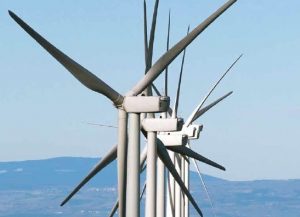Wind energy’s pivotal role in Canada’s transition to a low-carbon future will be in the spotlight when industry leaders gather this fall for the Canadian Wind Energy Association’s (CanWEA) 2017 conference and exhibition.
CanWEA and its partner Hannover Fairs (Canada) have unveiled the program for this year’s event, set for October 3-5 at the Palais des congrès de Montréal.
The theme of the conference is Energy Transition, and over the course of 2 ½ days, a line-up of expert speakers will examine how the rise of low-cost renewable generation sources, the rapid pace of technological innovation, shifting consumer expectations, and the need to reduce greenhouse gas emissions are disrupting electricity business models and transforming the way we produce and use energy.
The event’s three plenary sessions will discuss emerging demand drivers for wind energy in Canada and explore how electricity infrastructure modernization, grid operational changes, and electricity market reforms can enable integration of the high penetrations of renewable energy required to meet Canada’s economic and environmental goals.
A series of eight concurrent educational sessions are also planned, providing insight on how forward-thinking wind-farm operators, project developers, and electricity system planners can turn change into opportunity, tackling the permitting, resource assessment, and health and safety challenges facing a growing industry, and delving into the operational improvements, technology advancements, and policy solutions that will contribute to the sector’s ongoing success.
“The world is in the midst of an unmistakable and unstoppable transition to a low-carbon future, and Canada is no exception,” said CanWEA President Robert Hornung. “The role the wind-energy industry will play in shaping that future is what CanWEA 2017 is all about. No other form of electricity generation is better positioned to provide the low-cost, reliable, and emissions-free energy that Canada needs to remain competitive in the next century of clean growth.”
“Finding ways to power our lives with non-emitting energy sources is top of mind around the globe, and Canada is a step ahead,” said Larry Turner, president and CEO of Hannover Fairs. “Canada’s grid already boasts more than 80 percent emissions-free electricity and is aiming for 90 percent by 2030. This conference is focused on providing delegates with critical policy, technology, and best-practice updates, as well access to the top organizations and companies moving wind energy forward in a cleaner economy.”
The CanWEA 2017 program is available on the conference website, windenergyevent.ca.
Online registration is now open, with early bird rates in effect until August 30.
CanWEA’s 33rd Annual Conference & Exhibition is Canada’s largest wind-energy event, attracting about 1,500 attendees and more than 100 exhibiting companies from around the world.
Bloomberg New Energy Finance’s New Energy Outlook 2017 predicts nearly three-quarters of the $10.2 trillion to be spent on new power generation worldwide to 2040 will be invested in wind and solar plants. Wind and solar will make up 48 percent of the world’s installed generating capacity and 34 percent of electricity generation by 2040, compared with just 12 percent and 5 percent now.
The International Energy Agency’s World Energy Investment 2017 report found spending in the electricity sector exceeded the combined spending on oil, gas, and coal supply for the first time ever last year, and the largest share of electricity investment was in renewables.
Canadian provinces are part of the global-energy transition. Alberta and Saskatchewan are moving aggressively to modernize their electricity systems and expand their energy economies; Ontario is building a clean and flexible grid to underpin its efforts to reduce greenhouse gas emissions 80 percent below 1990 levels by 2050; Quebec’s new 2030 energy policy accelerates its shift toward renewable energy sources and positions the province to become a provider of competitive clean power to neighboring markets, and the Maritimes is exploring the use of smart-grid technologies and regional dispatch to reliably integrate high levels of renewable generation. For more information, please visit the CanWEA Wind Markets web page.
Source: CanWEA



























